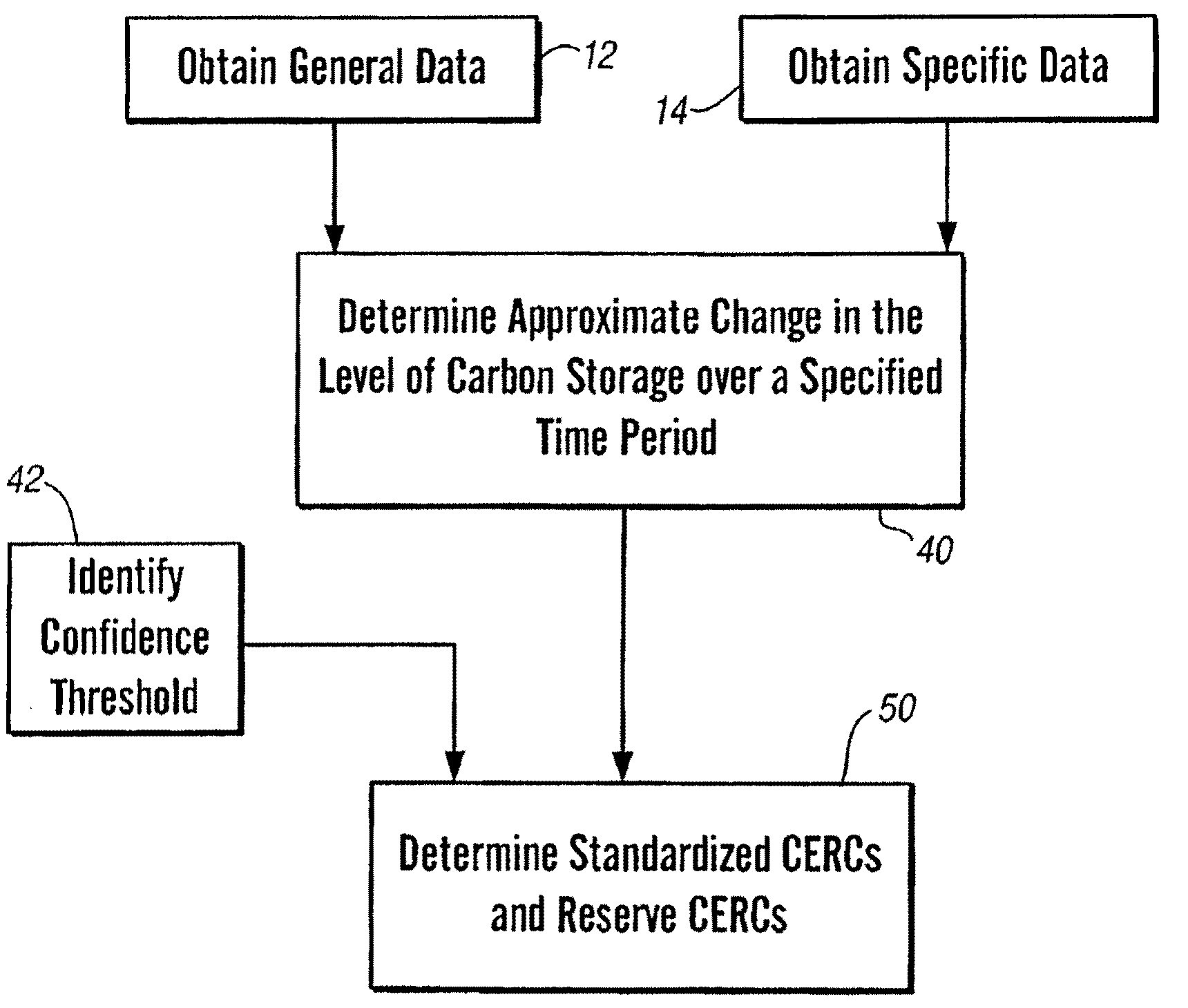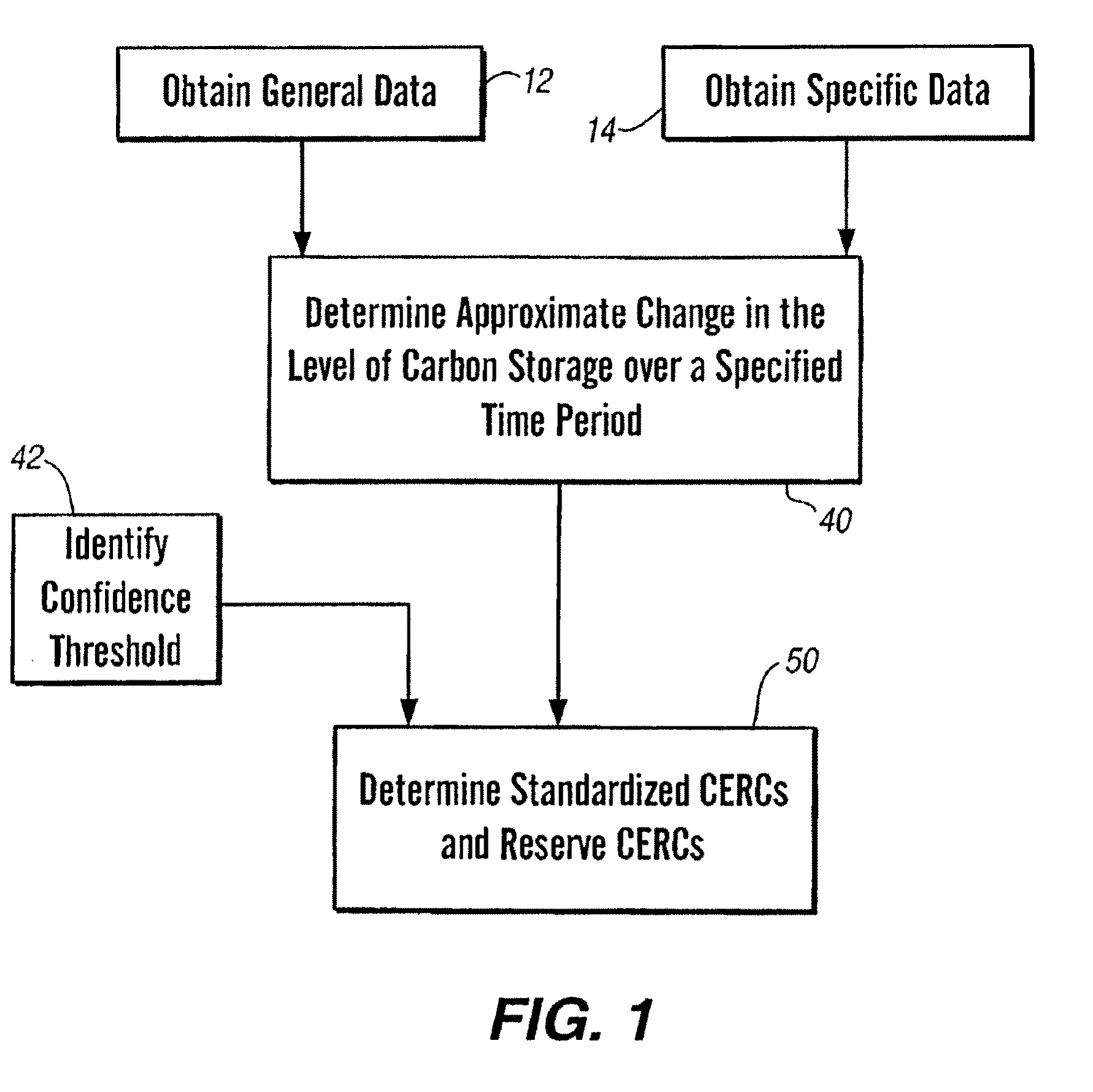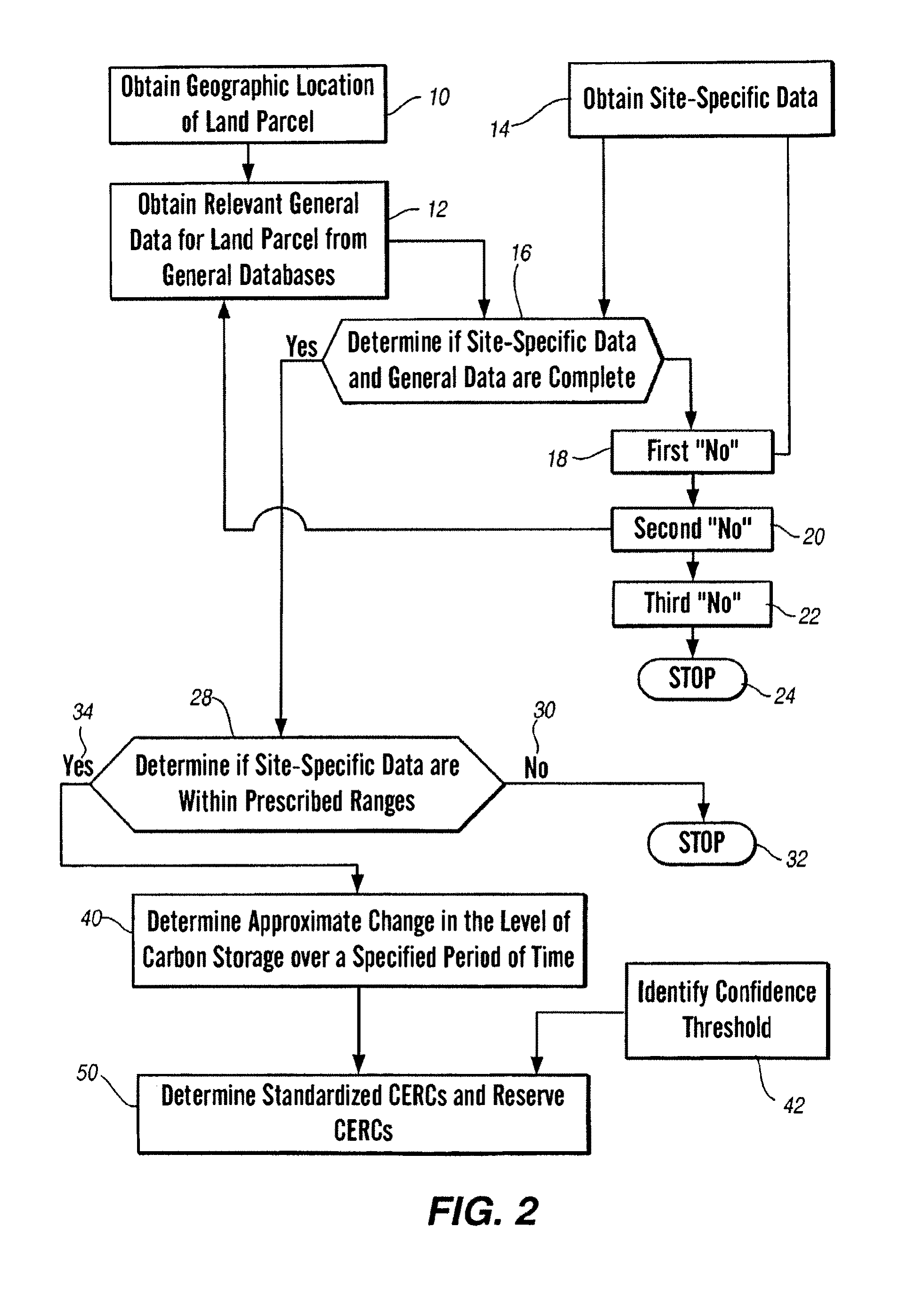Technique for determining and reporting reduction in emissions of greenhouse gases at a site
a technology of greenhouse gas emission and site, applied in the direction of instruments, data processing applications, ict adaptation, etc., can solve problems such as the net release of carbon dioxide into the air
- Summary
- Abstract
- Description
- Claims
- Application Information
AI Technical Summary
Benefits of technology
Problems solved by technology
Method used
Image
Examples
Embodiment Construction
[0041]One embodiment of the invention is directed to generating and quantifying standardized CERCs for a parcel of land through the use of general data for a given region encompassing the parcel of land by utilizing a carbon sequestration model and an uncertainty analysis. That is, it would not be necessary to have detailed, long term site-specific data for a parcel of land. Preferably, the general data for the region dates back as far as possible, more preferably back to approximately 1900 and the region is as small a geographic region as possible, such as a county in the United States. If available, site-specific data also may be used. More preferably, site-specific data from 1990 to date is used, along with the general data, to determine the standardized CERCs and reserve CERCs through a carbon sequestration model and uncertainty analysis.
[0042]Referring to FIG. 1, one embodiment of the invention is depicted by a flow chart showing a method of generating standardized CERCs and re...
PUM
 Login to View More
Login to View More Abstract
Description
Claims
Application Information
 Login to View More
Login to View More - R&D
- Intellectual Property
- Life Sciences
- Materials
- Tech Scout
- Unparalleled Data Quality
- Higher Quality Content
- 60% Fewer Hallucinations
Browse by: Latest US Patents, China's latest patents, Technical Efficacy Thesaurus, Application Domain, Technology Topic, Popular Technical Reports.
© 2025 PatSnap. All rights reserved.Legal|Privacy policy|Modern Slavery Act Transparency Statement|Sitemap|About US| Contact US: help@patsnap.com



